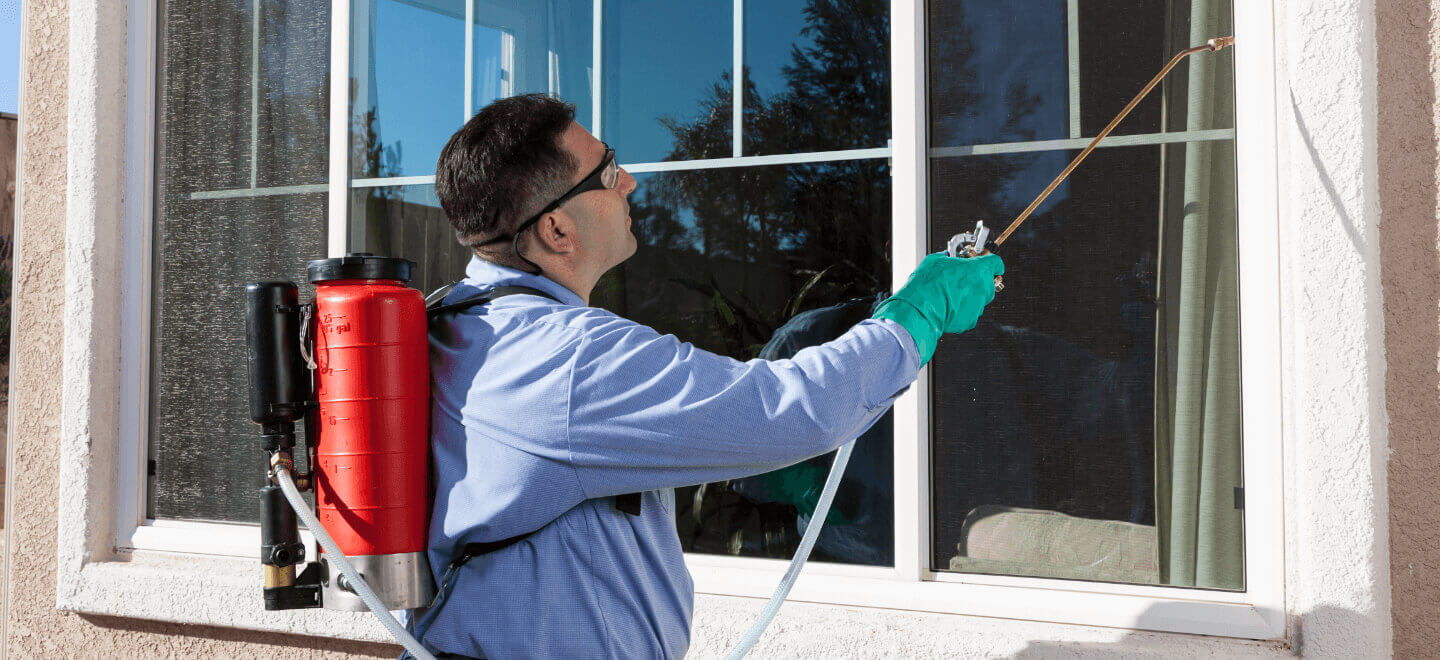Top Quality A1 Pest Control Services Charlotte - Safeguard Your Home
Top Quality A1 Pest Control Services Charlotte - Safeguard Your Home
Blog Article
Bed Insect Therapy Malfunction: Contrasting Chemical Vs. Non-Chemical Solutions
In the realm of bug control, specifically when dealing with the consistent concern of bed bugs, the option in between chemical and non-chemical treatment options can be a pivotal one. Both methods provide unique advantages and disadvantages, affecting elements such as performance, safety considerations, and total price. By checking out the nuanced information of each method, a clearer understanding of which path to go after in addressing a bed bug invasion can be obtained.
Effectiveness of Chemical Therapies
Chemical therapies for bed pest problems have actually been commonly acknowledged for their powerful and quick efficacy in eliminating these insects. When taking into consideration the effectiveness of chemical treatments, it is critical to understand that they can provide a quick and thorough option to a bed insect issue. Specialist pest control experts usually count on pesticides to target bed pests at different phases of their life process, consisting of eggs, grownups, and fairies. These chemicals generally work by interrupting the bed pests' nerve system, leading to paralysis and ultimate fatality.
Additionally, chemical treatments have the benefit of providing recurring impacts, meaning that they can proceed to get rid of bed bugs also after the initial application. This recurring action is particularly useful in combating any prospective re-infestations. Additionally, the quick activity of chemical therapies can bring relief to people facing extreme bed insect problems, enabling them to reclaim control of their living areas swiftly.
Safety Concerns With Chemical Solutions
One critical facet that calls for careful consideration when utilizing chemical services for bed insect treatment is ensuring the safety and security of passengers and the environment. Exposure to particular chemicals utilized in bed pest treatments can lead to breathing problems, skin irritability, or various other adverse reactions, particularly in people with pre-existing conditions or level of sensitivities.
Additionally, the environmental influence of chemical options is an additional considerable factor to consider. Some pesticides used in bed insect therapies may be unsafe to advantageous insects, wildlife, and ecosystems if they leach right into the dirt or water systems. It is vital to use chemical treatments judiciously, adhering to safety guidelines, and taking into consideration less harmful options to alleviate these risks and guarantee the secure and efficient administration of bed pest infestations.
Benefits of Non-Chemical Techniques
Considering the potential safety and security problems and ecological impact connected with chemical services for bed insect therapy, exploring non-chemical methods provides an appealing choice with several unique benefits. Non-chemical techniques use a more secure choice for houses, specifically those with animals, children, or people sensitive to rough chemicals. These approaches eliminate the threats of direct exposure to poisonous materials, reducing the possibility for adverse wellness effects. In addition, non-chemical therapies are eco pleasant, as they do not add to air or water air pollution, making them a sustainable choice for pest control.
Furthermore, non-chemical options can be reliable in targeting bed bugs, consisting of hard-to-reach areas where chemical therapies might not penetrate - A1 bed bug treatment in charlotte. Approaches such as warm treatment, vacuuming, heavy steam cleansing, and cushion coverings provide detailed eradication without the use of hazardous chemicals.
Limitations of Non-Chemical Treatments

Furthermore, non-chemical therapies usually need numerous applications to achieve effective eradication. This can be lengthy and may not always ensure full elimination of all bed insects and their eggs, specifically in hard-to-reach or concealed locations.
Additionally, the success of non-chemical therapies greatly relies upon proper implementation and thoroughness, which can be testing for people without professional knowledge. Insufficient application of non-chemical approaches might cause incomplete elimination, bring about persistent invasions and the demand for added therapies.
Therefore, while non-chemical treatments have their benefits, it Related Site is vital to acknowledge these constraints and consider them when determining the most efficient technique for handling bed insect infestations.
Expense Comparison: Chemical Vs. Non-Chemical Options
Provided the restrictions connected with non-chemical treatments, a vital facet to review in the context of bed pest monitoring is the price comparison in between chemical and non-chemical alternatives. Chemical therapies typically involve the application of pesticides by specialists, which can vary from $250 to $900 per space, depending upon the seriousness of the infestation and the size of the area to be treated. In comparison, non-chemical therapies like heat treatment or steam can be more pricey, with expenses ranging from $1,000 to $6,000 for an entire home. While the initial price of chemical therapies may appear reduced, numerous treatments may be required to completely eradicate the problem, possibly enhancing the total expense. On the various other hand, non-chemical options might offer a more environment-friendly and sustainable option, although they can be cost-prohibitive for some individuals. Inevitably, when considering the expense Get More Info of bed insect therapy choices, it is essential to weigh the ahead of time costs versus the efficiency and long-lasting sustainability of the picked method.
Final Thought

Considering the potential safety and security worries and ecological impact connected with chemical solutions for bed bug therapy, exploring non-chemical methods offers a promising option with numerous unique advantages.Offered the limitations connected with non-chemical therapies, an essential element to review in the context of bed bug management is the cost contrast between chemical and non-chemical choices. In comparison, non-chemical therapies like warmth therapy or steam can be extra pricey, with costs ranging from $1,000 to $6,000 for an entire home. While the initial expense of chemical treatments may seem lower, several therapies may be required to completely eradicate the infestation, potentially enhancing the general cost.In conclusion, when comparing chemical and non-chemical bed bug treatment alternatives, it is vital to consider effectiveness, safety, benefits, restrictions, and cost.
Report this page